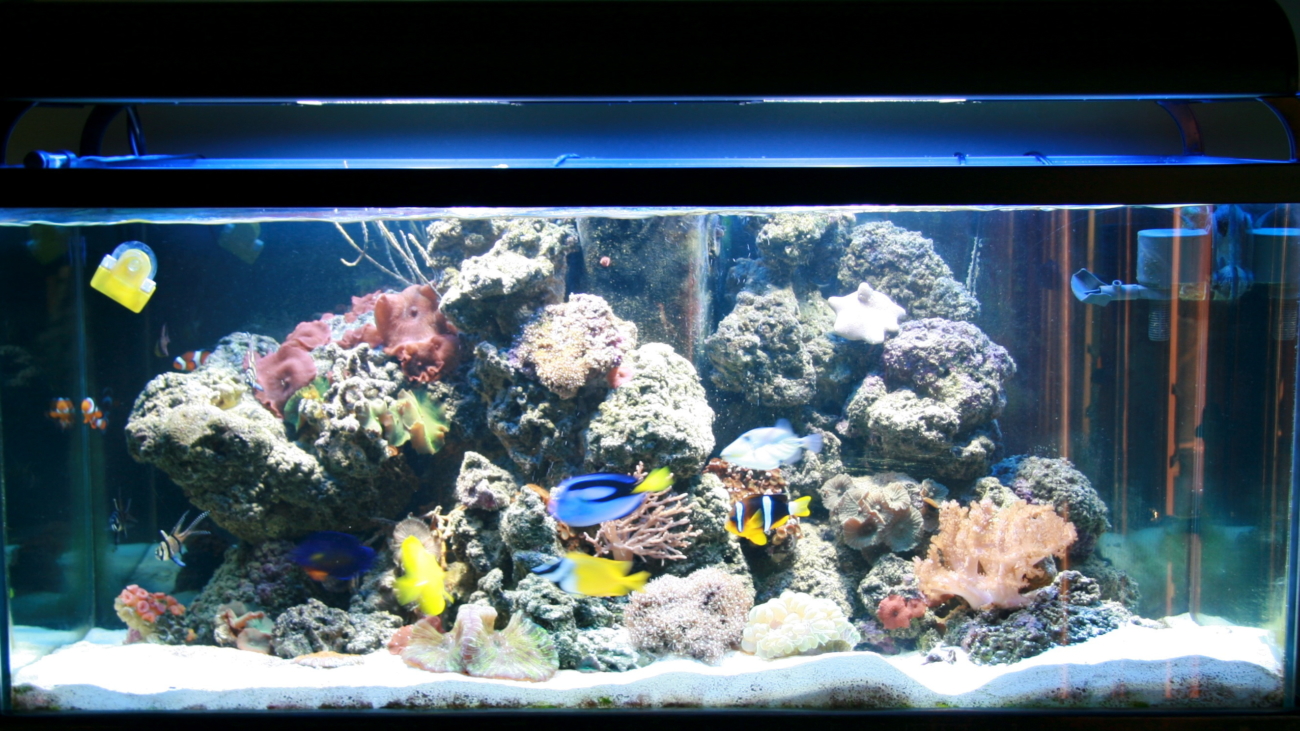As someone who has made more than his fair share of mistakes in the saltwater reef aquarium hobby, I thought I’d tackle this question in this month’s blog post.
While the short answer is yes, you can keep fish in your reef aquarium, it’s usually not the best idea. Aside from compatibility issues (large angels, butterfly fish, puffers, and triggers will all eat corals and invertebrates with gusto) you can have water quality issues. Fish eat, pee and poop, and in a closed system like an aquarium those waste products build-up very quickly. That in turn drives down water quality, which is bad for your corals. And corals are the whole reason why you set up a reef aquarium in the first place. In the ocean this is never a problem, as there are trillions upon trillions of gallons of water. Ocean reefs have the equivalent of hundreds of water changes per hour, which means pollutants never have the opportunity to build-up. The same cannot be said for our tiny glass and acrylic boxes that we call aquariums.
But let’s say you’re determined to keep fish in your reef tank. After all, who doesn’t love the natural look of fish swimming amongst the corals? So what to do? Provided you have a good-sized reef (50 gallons and up, but bigger is always better), a good protein skimmer and a bunch of healthy live rock, and good maintenance practices (i.e. frequent partial water changes), it can be done. Small fish such as clownfish, chromis, and blennies can all be kept in reef aquariums without adding too much biomass to the system.
Although they will (generally) not eat your corals and inverts, larger fish such as tangs and dwarf angels can cause problems. For starters, they don’t do well in small spaces. You’ll need at least a 4 foot long aquarium (75 gallons and up) to keep these beauties, with 6 feet (125 gallons and up) being a much more appropriately-sized tank. And tangs eat and poop a LOT, which will foul-up your water quality pretty quickly. That can really stress your corals and inverts, so unless you have a big system and you’re really staying on top of your maintenance, I wouldn’t recommend trying to keep larger, more active fish in your dedicated reef aquarium.
If you want to keep a reef aquarium, stick with corals, inverts, and perhaps a few small fish, and your tank will be better and healthier for it. If you want to keep the larger, more active fish mentioned above, a large fish-only tank is the way to go.
I hope this advice helps, and good luck with your reef tank!



